White Oak Lumber
- June 27, 2023
- 0 comment
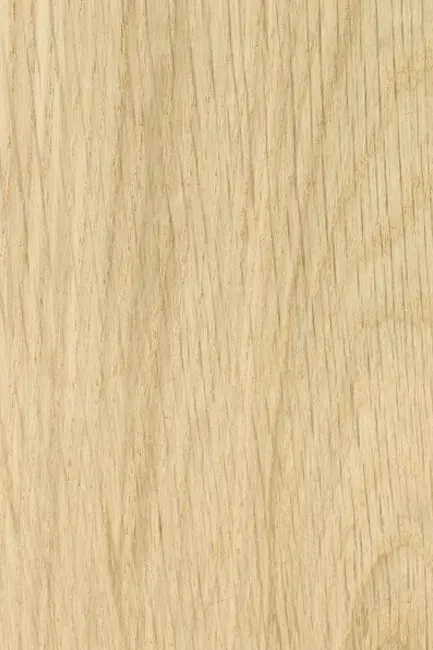
White oak lumber is a cherished hardwood material extensively used in various woodworking and construction projects. This is largely due to its excellent combination of strength, durability, and aesthetics. The natural color palette of white oak wood ranges from light to medium brown, with substantial variation in hues often observed. The sapwood tends to be lighter in comparison to the heartwood, which exhibits shades from light to dark brown. White oak is also recognized for its straight grain pattern, contributing to its visually pleasing appearance.
The texture of white oak is coarse and somewhat uneven, adding an element of rugged beauty to its overall appeal. A unique characteristic of this hardwood is that it undergoes subtle color changes when exposed to light over time. This gentle transformation enhances the natural charm of the wood, making it a versatile choice for various design styles and settings.
Beyond its aesthetic versatility, white oak’s practical advantages further elevate its popularity. Its resistance to rot and decay is exceptional, making it a reliable choice for long-term applications. Hardwood is commonly employed in the creation of furniture, flooring, and cabinetry. Its strength and water-resistant properties also make it an ideal material for boatbuilding. Additionally, it is the preferred wood for crafting barrels used in the aging process of wines and spirits, a testament to its durability and unique characteristics.
| Specification | Description |
|---|---|
| Common Name(s) | White Oak |
| Scientific Name | Quercus alba |
| Distribution | Eastern and Central North America |
| Tree Size | 65-85 ft (20-25 m) tall, 3-4 ft (1-1.2 m) trunk diameter |
| Average Dried Weight | 47 lbs/ft³ (755 kg/m³) |
| Specific Gravity (Basic, 12% MC) | .60, .75 |
| Janka Hardness | 1,360 lbf (6,000 N) |
| Modulus of Rupture | 14,830 lbf/in² (102.3 MPa) |
| Elastic Modulus | 1,762,000 lbf/in² (12.15 GPa) |
| Crushing Strength | 7,370 lbf/in² (50.8 MPa) |
| Shrinkage | Radial: 5.6%, Tangential: 10.5%, Volumetric: 16.3%, T/R Ratio: 1.9 |
Color/Appearance
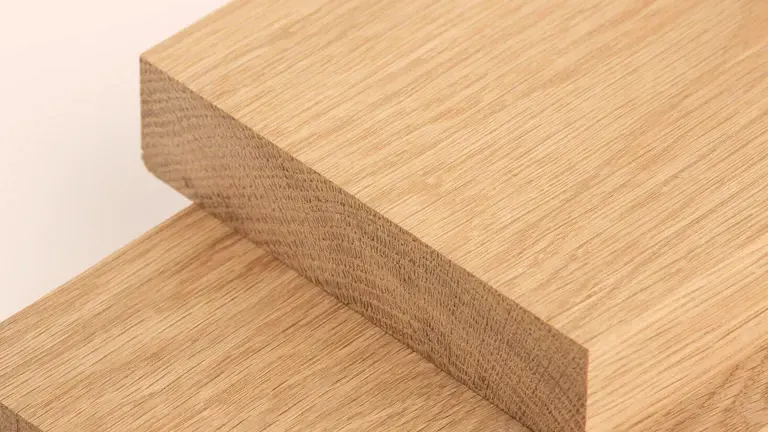
White Oak lumber, sourced from the Quercus alba tree, boasts a color spectrum ranging from light to medium brown, often accompanied by subtle golden undertones. This natural palette not only contributes to its visual appeal but also allows it to seamlessly integrate into a variety of design aesthetics, from traditional to contemporary.
Unique Feature
A distinctive characteristic of White Oak is its exceptional strength and durability. Renowned for its robustness, this hardwood stands out as a reliable choice for a myriad of applications. Its unique blend of strength and resilience makes it a preferred material for projects where longevity and sturdiness are paramount.
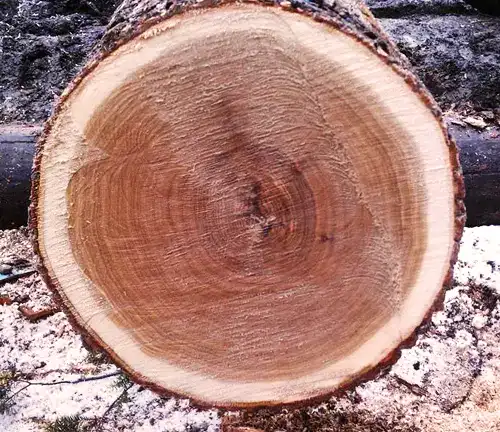
Grain/Texture

The grain of White Oak is a captivating feature, showcasing a tight and uniform texture. The wood’s grain patterns, a delightful mix of straight and arched lines, add an elegant touch to finished products. This consistency contributes to the wood’s popularity in crafting furniture, flooring, and cabinetry.
Rot Resistance
White Oak’s natural resistance to decay and rot sets it apart, making it particularly suitable for both indoor and outdoor use. Its ability to withstand exposure to the elements positions it as a preferred choice for outdoor projects. Additionally, this resistance to decay makes White Oak a favored material for boat building, where contact with water is inevitable.
Workability
White Oak’s workability is notable, as it lends itself well to various woodworking processes. It can be easily machined and responds favorably to staining and finishing. The wood’s cooperative nature in the hands of craftsmen contributes to its versatility in creating intricate designs and durable structures.

Allergies/Toxicity
White Oak is generally considered non-allergenic. It does not pose significant health risks to individuals working with it. However, as with any woodworking material, standard safety precautions, such as wearing protective gear, are advisable when handling White Oak lumber to minimize the risk of irritation.
Pricing/Availability
The pricing and availability of White Oak lumber can vary depending on factors such as grade, thickness, and sourcing. Generally, White Oak is more widely available than some exotic hardwoods, contributing to its accessibility. While it falls within the mid to high range in terms of pricing, its durability and versatility justify the investment for many projects.
Sustainability
White Oak is recognized for its sustainability, with responsible forestry practices ensuring a steady supply. Efforts to manage and protect White Oak forests contribute to its eco-friendly profile. As awareness of environmental concerns grows, the use of sustainably sourced White Oak becomes an ethical choice for those conscious of the impact of their projects on the environment.
Common Uses
White Oak lumber enjoys widespread use across diverse industries due to its remarkable qualities. Renowned for its strength and durability, it is a preferred material for crafting high-quality furniture, including tables, chairs, and bed frames. The hardwood’s hardness and wear resistance make it an excellent choice for hardwood flooring, known for aging gracefully over time. White Oak’s fine grain and uniform texture also find application in cabinetry, interior trim, and molding, adding elegance to architectural elements. Its resistance to water and decay makes it a top choice for boat building, contributing to boat frames, planking, and decking. In outdoor construction, White Oak is utilized for decks, porches, and outdoor furniture where exposure to the elements is a concern. The cooperage industry values White Oak for crafting barrels, impacting the flavors of aged beverages. Additionally, its durability extends to railroad ties, tool handles, and sporting goods like baseball bats. Architectural joinery benefits from White Oak’s workability, making it ideal for doors, window frames, and custom woodworking projects. In summary, White Oak lumber’s versatility is evident in its ability to enhance both functional and decorative aspects in furniture, construction, and various other applications.
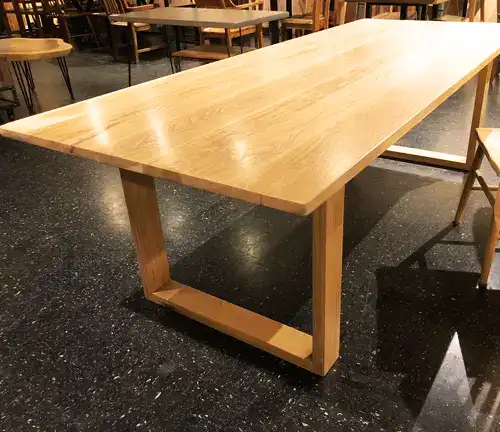
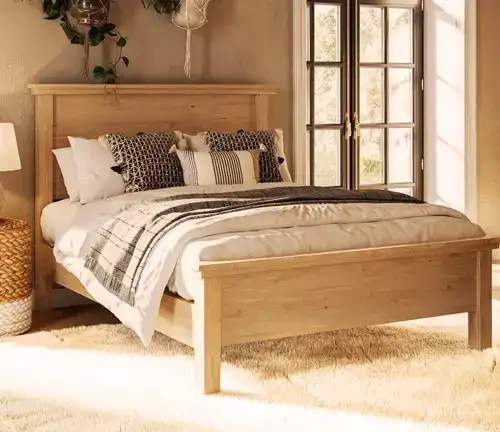
Frequently Asked Questions
- Is White Oak lumber suitable for outdoor projects?
White Oak is an excellent choice for outdoor projects due to its natural resistance to decay and rot. Its durability makes it well-suited for applications such as decks, porches, and outdoor furniture that are exposed to the elements. - How does the color of White Oak lumber change over time?
White Oak undergoes a subtle transformation in color as it ages. Initially light to medium brown with golden undertones, it develops a richer patina over time, contributing to its aesthetic appeal and the unique character of the wood. - What makes White Oak ideal for boat building?
White Oak’s natural resistance to water and decay makes it a preferred wood for boat building. It is used in constructing boat frames, planking, and decking, providing a durable and reliable material for marine applications. - Is White Oak lumber suitable for indoor furniture?
Yes, White Oak is commonly used for indoor furniture construction. Its exceptional strength and stability make it a popular choice for crafting high-quality furniture pieces such as tables, chairs, dressers, and bed frames. - How does White Oak contribute to the flavors of aged beverages in barrels?
White Oak is traditionally used in the cooperage industry for crafting barrels for aging beverages like wine and whiskey. The wood imparts unique flavors to the beverages over time, enhancing the overall taste and characteristics of the aged product.




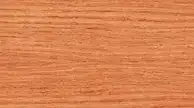


Leave your comment